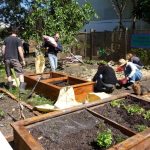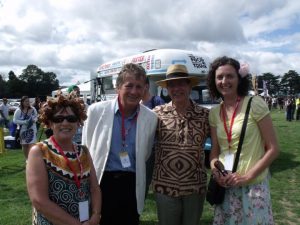I’m completely baffled at the illogical and unreasonable amount of money going towards roads in New Zealand. In Auckland there has been a clear vote for an integrated transport system that provides a range of options. In particular if we want a healthy, sustainable, prosperous future there has to be substantial investment in Public Transport and walking/cycling.
Unfortunately even though the goal of the Government Policy Statement on Transport 2012-22 is to enhance economic activity and growth the proposed investment of $13 bn on motorways is only going to increase cars, pollution and congestion. There needs to be a complete re-allocation of transport funds and the government needs to be told why. With the help of Auckland Transport Blog, the Greens and Cycle Action‘s submissions I’ve been able to make a quick submission myself just before the deadline today.
Submission on the draft Government Policy Statement on Land Transport 2012-2022.
The proposed GPS 2012 does not address the transport needs of New Zealand, and ignores historic and ongoing transport trends in its strong and indeed further increased focus on state highway construction funding.
After two fuel price peak periods in only 5 years (showing the increasingly volatile nature of the the petrol markets) and after 5 years of no state highway traffic growth (2010 traffic volumes being equal to those of 2005, despite population growth), I consider that the direction of the GPS is unreasonable, and indeed, illogical.
The GPS proposes to essentially approve and ‘reward’ the past budget-overruns in the state highway activity class ($50-150 million each year during the last three years) by providing further money for this activity class, and proposes to proceed with new Roads of National Significance (RONS) – while proposing strong cuts to new and improved local road and public transport infrastructure.
It also seeks further savings in smaller activity classes. These are strangely enough argued as “driving efficiencies”, while the largest activity class is exempt from any cutbacks, despite having numerous low-BCR projects, and a much greater potential for cutbacks in a time of budgetary constraints.
This proposed funding allocation is also a classical case of “putting all eggs in one basket”, and furthermore, increases New Zealand’s dependency on imported fuel, which has a damaging effect for our economy, and our trade balance. I would therefore suggest the following funding allocations:
Allocation of funds to Transport Modes
1) Dramatically reduce funding allocated to new state highways.
The Government Policy Statement suggests that over the next 10 years we should invest $13.7 billion (based on an average of the low and high range of expected expenditure) in building new state highways. This is over a third (39%) of the total land transport fund for this period. I strongly disagree with this. I am concerned that many of the current Roads of National Significance being built in New Zealand have very poor economic justification (e.g., Puhoi to Wellsford, Wellington Northern Corridor) and will have devastating environmental and social impacts. I believe that most of the possible new Roads of National Significance listed in the Government Policy Statement are likely to have even poorer economic cases and deliver a lower return on investment. Building more state highways will do nothing to resolve problems such as rising oil prices, climate change or congestion. The government should drastically reduce the amount of funding going into new state highways over the next 10 years to just 10% (maximum) of the National Land Transport Fund.
2) Increase funding allocated to walking/ cycling.
Currently walking/cycling is allocated less than 1% of the total National Land Transport Fund. However, walking/cycling infrastructure is often very cost-effective and has multiple benefits including reducing congestion, improving our health, reducing air pollution, and making us more resilient to rising oil prices. I believe funding for these modes should be increased immediately to 3% of the National Land Transport Fund, rising to at least 6% by 2022. Only by taking these measures will it be possible to realise a reasonable number of the numerous walking and cycling projects that local Councils and NZTA regional offices all over New Zealand would like to finally proceed with.
I support the consideration of the New Zealand Cycle Trail during local and state highway road improvements, as proposed in draft in the GPS.
In addition I’d like to see government funding for the operation of Public Bikes in the major cities around New Zealand that already have traditional bus and/or train services to their centres. Public Bikes hire schemes are excellent public transport because they are not dependent on a schedule and can be ridden to many different end points. As such they provide an excellent complement to the fixed schedule and routes that characterize buses and trains. The benefit cost ratios for even modest Public Bike systems (ie 250 bikes and 40 rental stations and average use) are excellent – $2.35 for every $1 invested by government.
3) New rail projects should be eligible for funding from the National Land Transport Fund.
This would mean that new capital expenditure on rail projects would have an assured and secure source of funding as new cap ex on roading projects does. It would also enable councils to provide their residents with improved public transport and help reduce our dependency on cheap oil. I do not accept the argument that rail projects should be excluded from the National Land Transport Fund because most of our transport funding comes from the fuel tax paid by motorists. It is clear that rail projects which reduce congestion do benefit motorists in various ways (through reduced congestion leading to faster travel times, cleaner air, safer streets, reduced risk of catastrophic climate change etc).
4) Increase funding allocated to public transport services
The Government Policy Statement allows for an increase of only $90 million in subsidies for public transport services over the next 10 years. PT services will receive only 10% of the national land transport fund. This suggests that the government is content to allow public transport patronage to increase only slightly over this time. This will lead to increasing gridlock in our major cities such as Wellington, Christchurch and Auckland. Auckland, in particular, will experience such dramatic population growth over the next 10 years it is difficult to see how it could accommodate such a small increase in public transport use and remain a functional city. The government should increase funding available to public transport services dramatically, aiming to increase it to 16% of the National Land Transport Fund by 2022.
5) Increase funding allocated to new public transport infrastructure
Currently just over 1% of the current National Land Transport Fund (or $370 million) is allocated to building new public transport infrastructure. This is clearly inadequate to achieve, for example, the improvements to the Auckland passenger rail system that have been identified as a priority by the Auckland Council and Aucklanders in numerous surveys. It will also not pay for the improvements to public transport wanted by other major councils in Wellington and Christchurch. I suggest that the Minister should increase funding for new public transport infrastructure to at least 25% of the National Land Transport Fund by 2022.
6) Decrease funding allocation to state highway maintenance
Currently state highway maintenance and renewal will take a significant proportion of the National Land Transport Fund (16%). It is important to ensure that our state highway network is maintained to an adequate level to keep NZ drivers safe. However, I believe that if the Minister does not pursue his proposed policy of investing significant sums into building new state highways and, instead, redirects these funds towards improving our rail, bus, walking and cycling systems then traffic on our state highways will be dramatically reduced. Shifting more freight by rail and coastal shipping will also reduce impacts on the state highway network. This will mean less money is needed for maintenance and the proportion of the national land transport fund allocated to state highway maintenance and renewal can be reduced to 10% or less.
Design of the Government Policy Statement
I also wish to state that I disagree with the current way in which the Government Policy Statement process works. I believe that the process gives too much power to the Minister of Transport to interfere in our transport funding decisions for political reasons. I am also concerned that allowing the Minister to set percentage ranges of the Government Policy Statement which must be spent on certain transport modes does not lead to us investing in the right projects or getting the best return on investment.
To give just one example, the very small percentage of the National Land Transport Fund allocated to walking and cycling infrastructure means that many cycling projects with very strong economic cases (or benefit cost ratios) could be delayed for many years as the New Zealand Transport Agency will have exhausted all the funds available within their “percentage range” for cycling/walking projects. At the same time many new state highways with very poor economic justification will be approved simply because the Minister has allocated a high percentage of funding to them.
This is not the way to get the best return from our investment in transport. Instead of having such a system, I would prefer it if all transport projects (regardless of mode) were evaluated by the New Zealand Transport Agency using the same criteria to determine which projects should have priority and be built first. This would mean all transport modes had a level playing field in terms of accessing funds.
The system used to determine the priority of transport projects should not rely on the traditional economic evaluation model which is flawed and over-estimates the time saving benefits of motorway projects. Instead projects should be evaluated for priority using a transparent formula that adequately measures environmental and social (as well as economical) costs and benefits of transport projects. In particular, such a prioritization approach should take into account key factors excluded from traditional transport evaluation models such as impacts on land use from transport projects, predicted changes in oil prices, impact of transport choices on climate change and the health benefits of active modes.
Conclusion
Overall, in my opinion the GPS engagement document is a disappointment and seems highly unlikely that transport investment will achieve its goals of enhancing economic growth and productivity if funding is allocated as proposed in this document. In the past few years there have been some significant changes to transport trends – with higher fuel prices contributing to far lower increases in traffic volumes, or even some years (like 2008) when state highway traffic volumes decreased by almost 3% compared to the year before.
If transport investment is to assist economic growth and productivity it needs to be well targeted, to areas where there are the greatest bottlenecks holding back the economy and also to areas where demand is increasing most rapidly. The GPS will guide the funding of transport projects in the next 10 years, not the last 10 years – so must look forwards and anticipate where additional capacity is required between now and 2022, or to set aside sufficient funds to keep existing infrastructure in a good state of repair so that it can be used to its maximum potential.
As noted above some significant changes to the GPS are considered necessary in order for it to achieve its stated goals.
Overall, there appears to be a significant gap between the worthy goals of the GPS (to enhance economic growth and productivity) and the funding preferences to achieve that goal – in particular the emphasis placed on constructing new state highways at a time when traffic on state highways is static or declining. To ensure it is a credible document, the GPS should explain this connection far more clearly.
 Events I attended the following events during August:
Events I attended the following events during August:



























